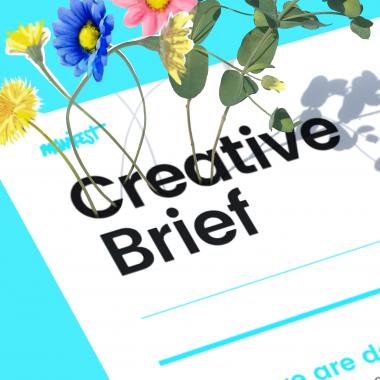
A creative brief should be two things: creative and brief. That’s what my first boss told me about writing the traditional agency world’s defining strategic document. It’s a philosophy predicated on restraint: Take everything you’ve learned and reduce it to a single-minded sentence fragment. Provide just enough information to spark the creative brain, but don’t burden it with detail.
The brief for the Sistine Chapel is a favorite example of this classic approach. Would you rather have a brief asking you to paint the ceiling, or a brief asking you to paint a ceiling for the greater glory of God, and as an inspiration and lesson for his people?
However, this approach would seem antithetical to a content marketing world preoccupied with minutiae and focused on quantity. Marketers want more assets in more channels, faster, not a few pieces of “matching luggage” like in advertising.
Content has classically been about exposition, elucidating detail and depth, not elegance or pithiness.
When, even by our own definition, a proper content strategy should include a variety of objectives, segments, insights and topics, what use is a creative brief if its function is to hone, not expand?
Why should I bother with a brief?
When I first entered the world of content, there was skepticism about using briefs. It felt like an impediment in the assembly line. Content creators knew their pillars; they had their list of topics; they understood the audience. Let the content begin. What kind of a person adds a step to the process, anyway?
Slowly but surely, content proved to suffer from a lack of focus. Data allowed us to connect clicks and engagement scores to actual business objectives, and proved that quantity wasn’t the end game after all. Confronted with a nearly impregnable deluge of distraction and exabytes of indistinguishable clutter, marketers shifted values and set out to make content strategic and purposeful, thawing the brief from its cryo-nap.
The creative brief is indeed an impediment, which is exactly what content needs. Slow down the factory and think for a minute. It forces you to internalize the marketing objective first and foremost. It ensures the work is connected to your brand strategy in a meaningful way, so you’re not just chasing keywords like a dog after pigeons. It tames the litany of pillars and topics, so creatives can focus on being creative. And perhaps most important, it forces you to have an idea—a singular, unifying principle in the work, rather than a loose association of tactics.
When should I use a creative brief?
When merely initiating a small, tactical effort like updating some blog posts, don’t bother. Use a brief to kick off large chunks of content that clearly belong together as an initiative. Simply be logical, and adjust as you learn. If you have three pillars in your content strategy that you evaluate every year, consider writing a brief for each pillar at the conclusion of your yearly planning phase. If you don’t use pillars but work against two or three different segments, consider writing one brief for each segment per year or quarter. If you work with a campaign-based model, you’ll want to generate briefs on a rolling basis to launch each campaign, ensuring they’re all tied to a yearly objective.
How should I write a creative brief for content?
Our brief template blends some of the sections you might see in a traditional agency brief with a couple of strategically placed extras to address the added detail that targeted content requires. Make sure you have the fundamentals in your template: objective, business situation, audience profile and the change you want to cause. Don’t just ask your team for deliverables and hand them specs—ask them to understand the marketing problem and think critically about solving it.
Include sections that can drive creativity and inspiration. A lot of briefs I have seen in the content world do not include the “single-minded proposition,” or as we call it, the “organizing idea.” This defeats the purpose: If you’re going to bother using briefs to sharpen your content, put yourself through the rigor of boiling them down into an essential phrase. It’s how you’ll know there’s an actual idea in your brief.
We’re also big believers in having a “tension” section. What’s happening in your audience’s life, in culture or in the market that your content will contradict or turn upside down? There has to be something; otherwise, your content won’t be worth engaging with. Audiences notice things that don’t conform to their expectations. For example, when writing a brief for our Paper and Packaging Board client about how paper can make you a more productive person, we included a tension that contradicted the default assumption that technology helps you get more done. In fact, research showed that the more a person relied on tech, the less productive they were.
What was once the easiest section of a brief to write, “deliverables,” is now the hardest. Content can be so many different things, and if you leave it entirely to creatives to sort out, it can overwhelm them. We try our best to lay out, with as much specificity as possible, what type of assets we need for which channels at which stage of the journey. It makes the brief much longer to dictate all of these assets, but in this case the detail is usually liberating, not confining.
We have also added a “fodder” section to most briefs where we store insights, trends or even quotes (e.g., subtopics gaining traction or search terms that shed new light on the audience). It’s a helpful reference for creatives, providing the depth they might need on some topics (especially if they’re working on editorial deliverables) without mucking up the body of the brief.
To download our creative brief template, please send us an email request here.
Am I doing it right?
One telltale sign of a good brief is a simple “audience” section. This is often where strategists stretch their fingers and unload an analysis of personas, insights and research on the poor creative team that’s trying to relate to the target on a human level. Yes, name the different personas or segments that the brief needs to speak to, but focus the section on what they have in common. What will make all of them care? If the answer is nothing, they probably don’t belong in the same brief.
If you do nothing else, just ensure your briefs are actually creative. That is, they convey a clear narrative. They could legitimately inspire an idea that a human being would care about. Allow creatives to send you back to the drawing board to try again. Anyone can lay out tactics, but driving captivating content is a talent, and the brief is how you develop it.

